111 Naya Paltan, Dhaka 1000
Mailing List
Sign up for our mailing list to get latest updates and offers.

Cox’s Bazaar is the Tourist Attraction in Bangladesh. Sloping down to the blue water of the Bay of Bengal against the picturesque backdrop of a series of hills covered with dense forest, Cox’s Bazar sea beach is the longest sea beach in the world. Its total length is 120km. Located 150 km south of Chittagong, this place got its name from Captain Hiram Cox, an officer of the British East India Company. It is the place of miles of golden sands, lofty cliffs, surfing waves, amazing conch shells, beautiful pagodas, Buddhist temples and tribes, and mouthwatering seafood. The shark-free beach has its own reputation for bathing, sunbathing, swimming, and surfing. The breathtaking beauty of the setting sun behind the vast sea is fascinating.
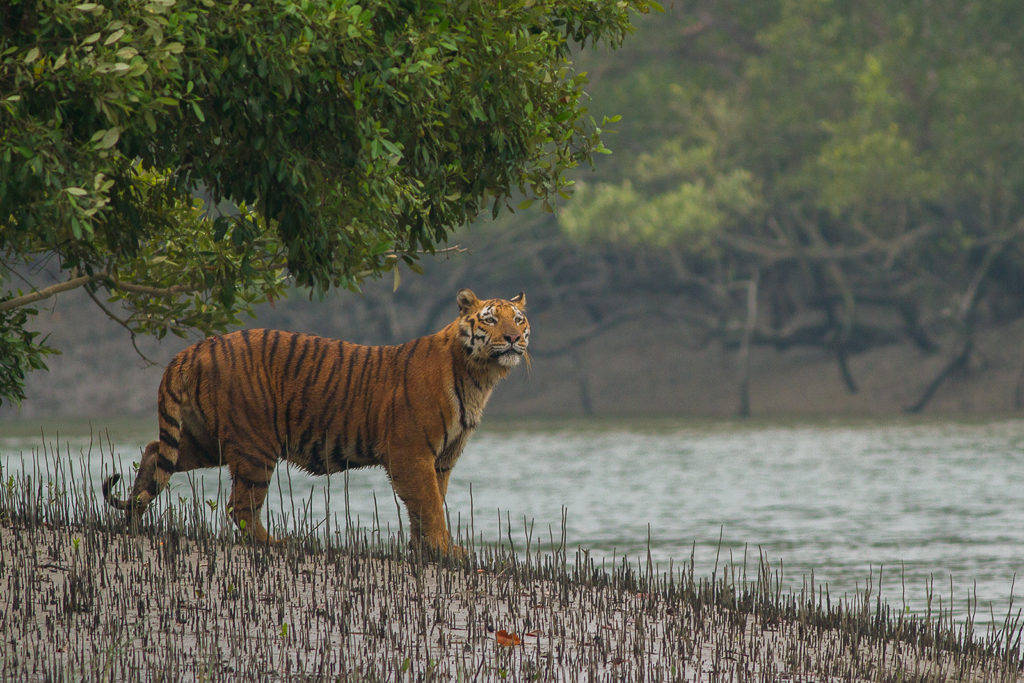
A unique eco-tourism destination, the Sundarbans, is the largest Mangrove Forest on earth and a UNESCO World Heritage Site. It stretches about 80km into the Bangladeshi and Indian mainland from the coast of the Bay of Bengal. 60% of this mist-shrouded forest is located in Bangladesh. Though this 10,500km2 forest area is surrounded by two of the most densely populated country on three sides, it remains remote, inhospitable and largely uninhabited by people. Intersected by a complex network of rivers and creeks, mudflats and tiny islands, this amazing forest is comprised of two elementary ecoregions: The Mangrove Forest and the Freshwater Swamp Forest.
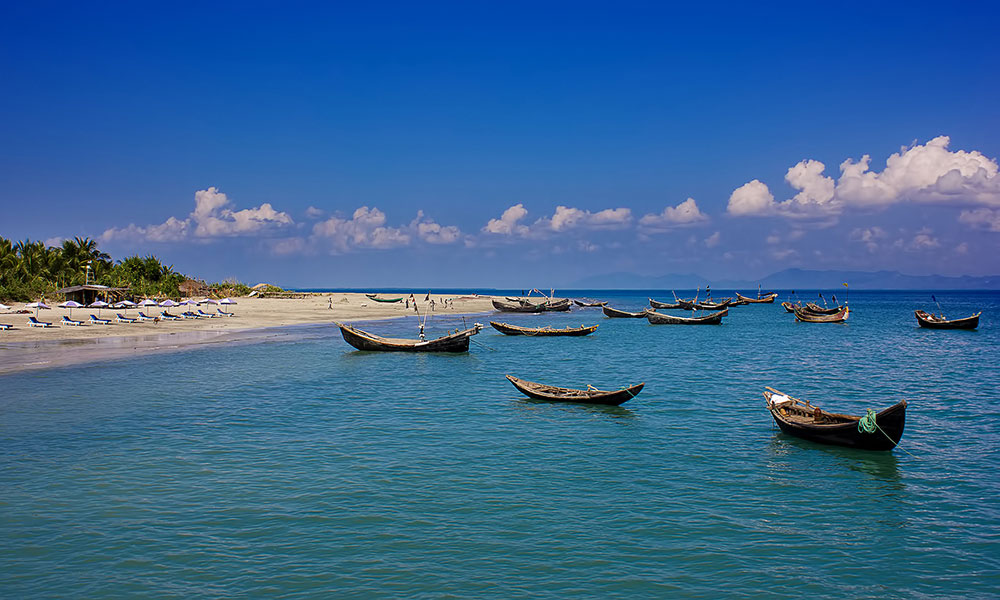
The St. Martin’s Island, also known as Narikel Jinjira (an island of coconut) and Daruchinir Deep (an island of cinnamon), is one of the most visited tourist’s spots in Bangladesh. The only coral island in Bangladesh is about 8 km in length and rarely more than 1km wide. It is about 10 km (6mi) south-west of the southern tip of the Cox’s Bazar-Teknaf peninsula. Beaches fringed with coconut palms, panoramic beauty of the island and pristine marine life attract the tourists. Magnificent landscapes, crystal clear sea water, coral colony, and the roar of the Bay of Bengal are the main attraction of the visitors.
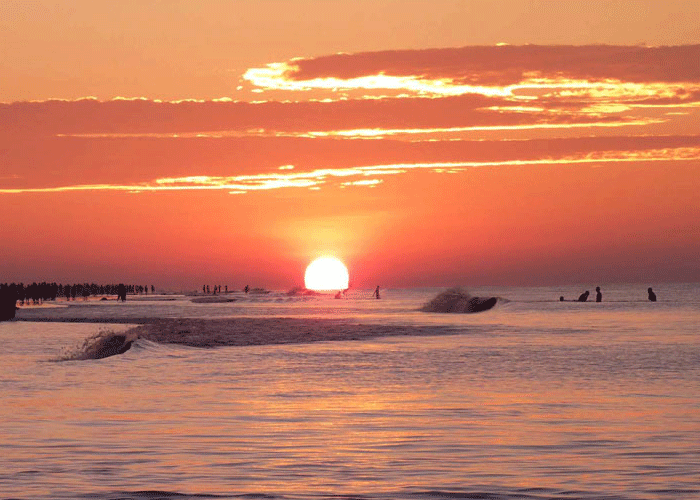
Known as Sagar Kannya or the Daughter of the sea, Kuakata is famous for its panoramic sea beach Tourist Attraction in Bangladesh. This 18 km long and 3 km wide sea beach is located at Kalapara Police Station of Patuakhali district. It is about 320 km from Dhaka and 70 km from Patuakhali Sadar. It is a unique place where you can witness both sunrise and sunset unobstructed. This beach is a lovely combination of picturesque natural beauty, blue sky, sandy beach, vast bay, and evergreen jhaubon. Here one can see 100 years old Buddhist temple and two wells of about 200 years old.
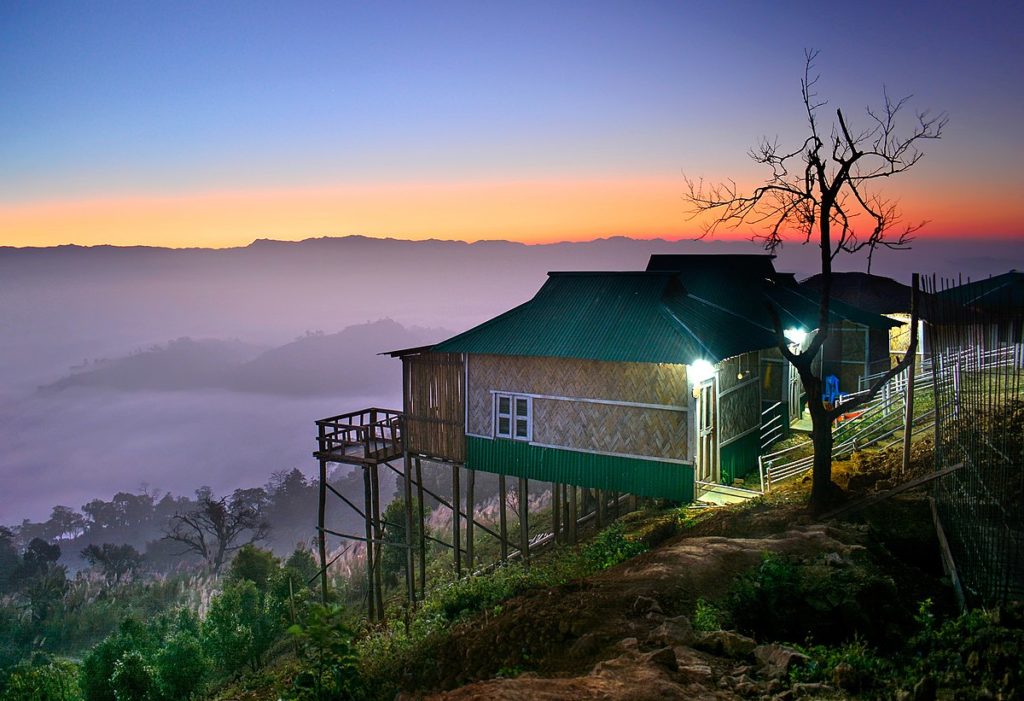
Sajek Valley is one of the topmost tourist destinations in Bangladesh. Located among the hills of the Kasalong range of Baghaichhari Upazila in the Rangamai District, this place is about 1800 feet above the sea level. It is known as the queen of hills and roof of Rangamati. Sajek valley is 80 km away from Khagrachari town and 90 km northwest from Rangamati town. It is only 8 km away from Mizoram, India. It’s lush green, scenic beauty of hills, wilderness, the opportunity of playing with clouds attract the tourists to come here.
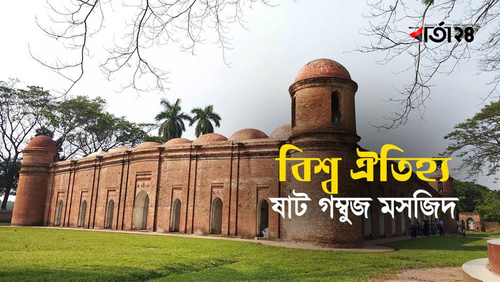
The Shat Gambuj Mosque is a UNESCO World Heritage Site and one of the topmost Tourist Attraction in Bangladesh. It is one of the largest historical mosques of the Sultanate period. The great Ulugh Khan Jahan established this mosque three miles west of the present Bagerhat town. This serene and imposing monument stands on the eastern back of an enormous sweet-water-tank. The mosque is famous for its sheer size and architectural beauty.
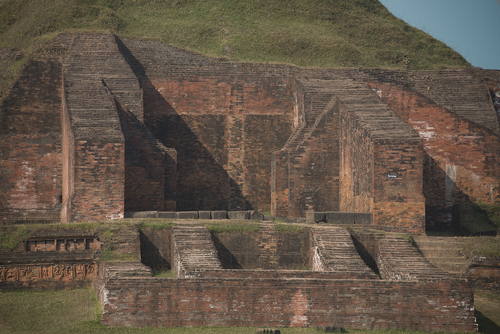
Sompur Mahabihar or Paharpur Bihar is one of the largest well known Buddhist Bihars in the Indian Subcontinent and one of the most popular tourist destinations in the country. This very important archaeological site was designated as a UNESCO World Heritage Site in 1985. The Bihar is located at Paharpur village, Badalgachhi Upazila in Naogaon District. This Buddhist Monastery is famous for its unparalleled architectural design. The wonderful terracotta plaques of the then musicians, snake charmers, different types of animals are the key attractions to see. The outer walls of the temple are decorated with the lifestyle plaques of ordinary folks of hundreds of years.
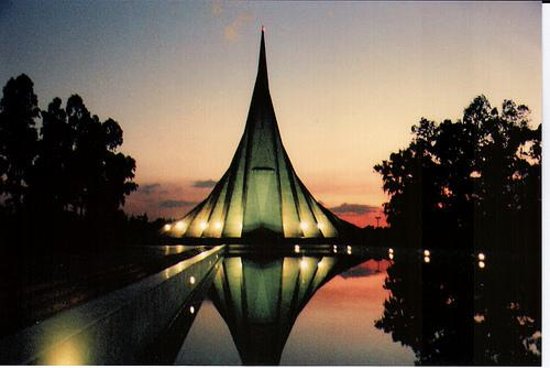
National Martyrs Memorial or Jatiyo Sriti Shoudho is the national monument of Bangladesh, erected as an iconic structure in the memory of those valiant sons and daughters who laid down their lives in the Liberation war of 1971. This monument is situated at Savar, about 35km northwest of Dhaka. Architect Moinul Hossain designed the monument. The whole complex area is of about 84 acres which are surrounded by a green belt of about 24.7 acres. Some mass graves and a water body is located in front of the monument. From the main entrance, visitors get a strong axial view of this structure. To reach to it one has to cross jagged and uneven path and a manmade lake by a bridge that symbolizes the nation’s difficult path to independence and the troublesome journey lies ahead.
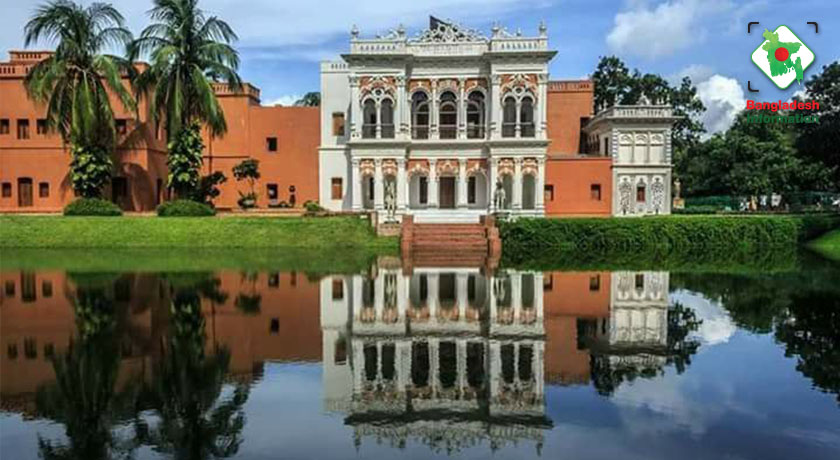
Sonargaon or The village of gold was the old capital of Bengal in the medieval period. It was a significant administrative and business center at that time. During the medieval period, it was the mint capital. From the 13th century, Sonargaon was used as the capital city by different rulers of eastern Bengal. In the mid-13th century, it was the capital of the Hindu Deva dynasty. But after a short time, Muslim rulers acquired it and made it their capital city.
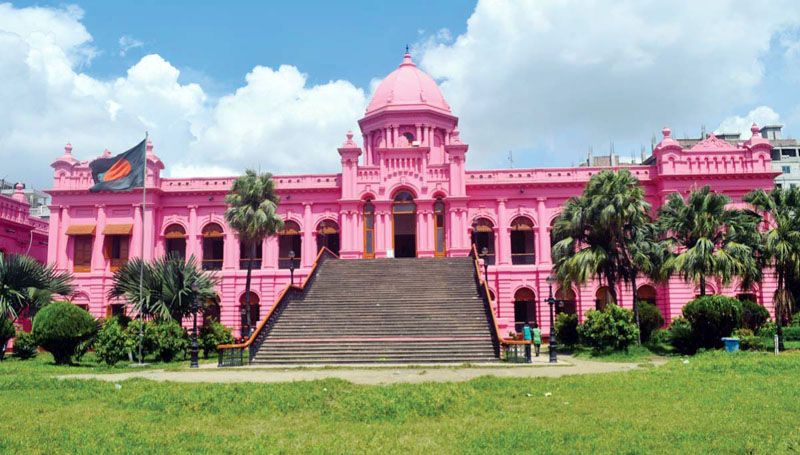
Once the official residential palace of the Nawabs of Dhaka, now Ahsan Manzil or the Pink Palace is a museum and one of the most visited places in Dhaka. The 5.5-acre premise of this palace bears the significance as an architectural reminder of the elite life of the Nawabs of Dhaka during the colonial era of 19th and early 20th century. In 1872, the patriarch of the Nawab family, Abdul Ghani (1813-1896), constructed the family’s official residence on the bank of the River Buriganga in old Dhaka and named the palace after his son Nawab Khwaja Ahsanullah (1846-1901). It’s mostly European styled building mixed with some decorative Indian motifs. Its soaring dome appears to be more about impressing the viewer on the exterior, rather than within the interior.
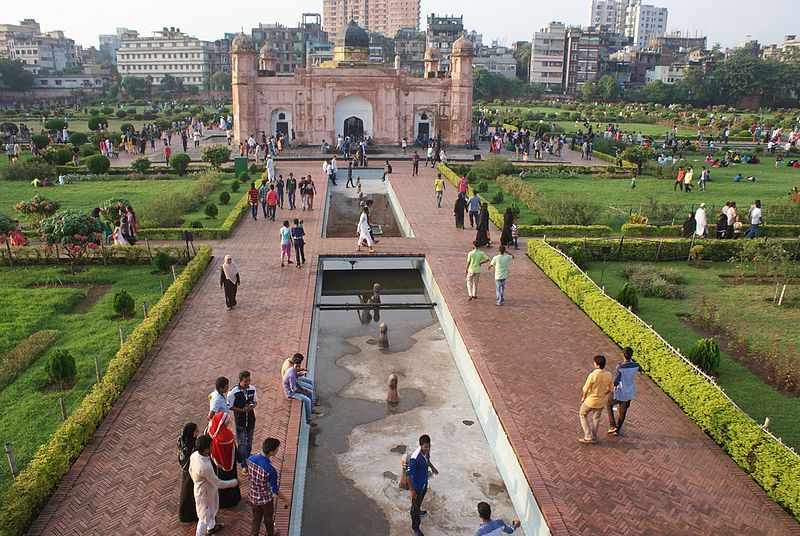
This 17th -century incomplete Mughal fort is the most popular and renowned one and bears a great significance of art by the Mughal Empire in Bangladesh. It stands proudly before the Buriganga River in the southwestern part of the old city. In 1678 a Mughal prince Muhammad Azam started the fort’s construction work during his viceroyalty in Bangladesh. But the construction work remained incomplete when he was called back by his father Aurangazeb to the capital Delhi. His son Shaista Khan did not complete the fort though he stayed here up to 1688. In 1684 his daughter Pari Bibi died. After her death, he started thinking the fort ominous and left the structure incomplete. There are several structures in the fort area.
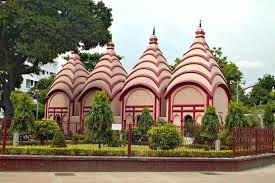
Dhakeshwari Temple is a state-owned Hindu temple in Dhaka. The name Dhakeshwari means “Goddess of Dhaka”. This ‘National Temple’ was built by one Mangat Ray who was also known as Ballalsena, younger brother of Arakanese king Shrisudharma, son of famous Arakanese king Raja Malhana, alias Husen Shah. Though the present edifice is modern in construction, there has been a temple on this same spot for nine centuries. The original statue was 800 years old but it was vandalized by the Pakistani soldiers during the liberation war in 1971. As the temple complex has undergone repairs, renovation and rebuilding several times in its long years of existence, its present condition does not clearly indicate any of its original architectural sign.
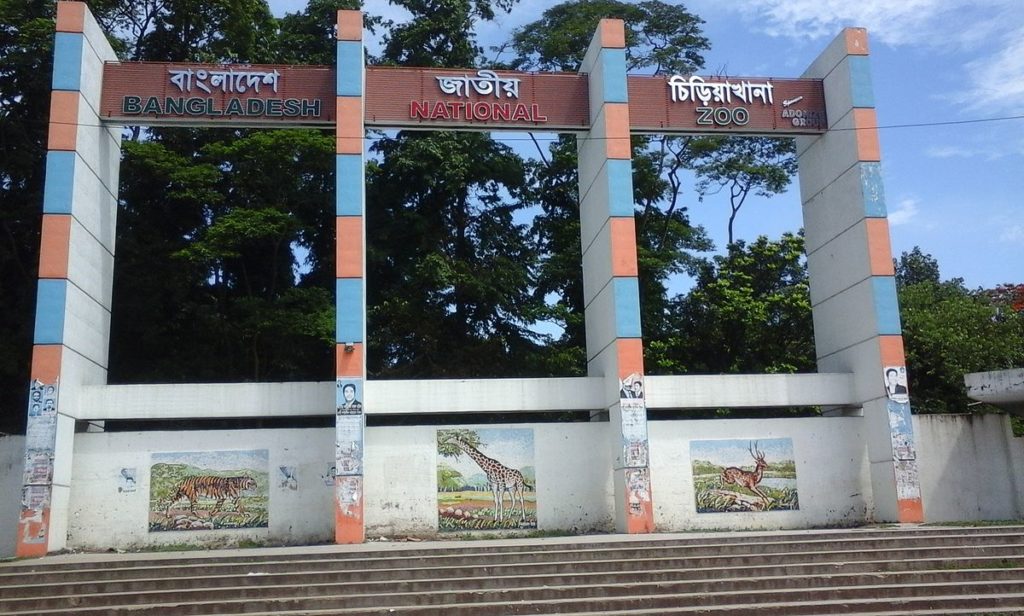
Located at Mirpur in Dhaka, Bangladesh National Zoo is one of the key attractions among the tourists and the local people. The zoo houses more than 2,000 animals of 165 species. It was established in 1974 over 75.53 hectors of land. About 10,000 spectators visit The National Zoo daily and the number increases in the weekends and holidays. Among the animals, the key attraction is the Royal Bengal Tiger. It has a good collection of birds, animals, and wildlife of both local and foreign origin. There are different types of animals including Lions, elephants, cheetahs, rhinos, zebras, deer, giraffes, black bear, hippos as well as many species of monkeys, chimpanzees, baboons etc. There are several bird shades in the zoo. Here you will find different types of local and foreign birds.
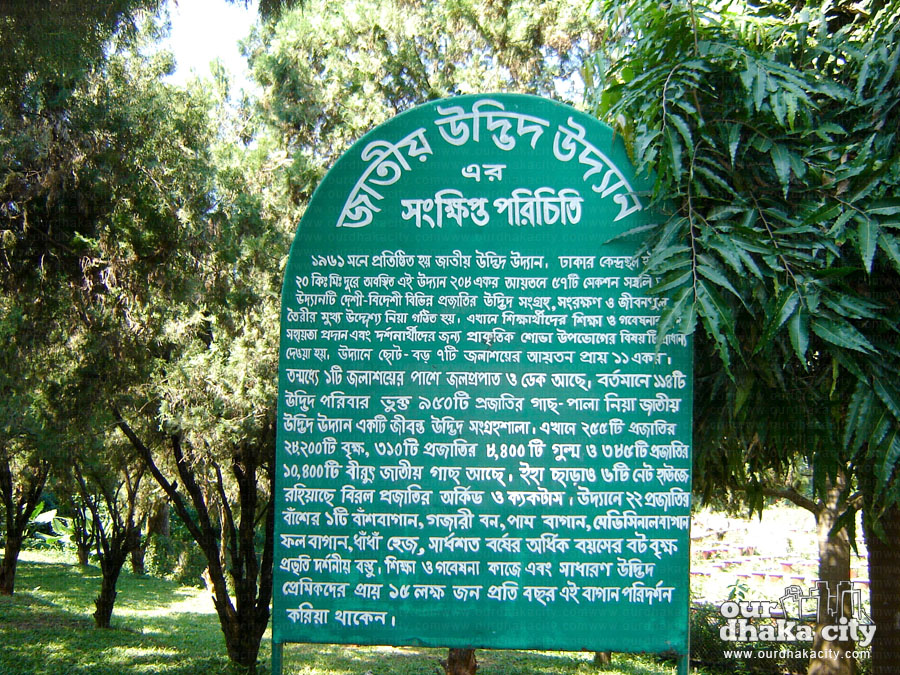
Situated at Mirpur in Dhaka beside the Dhaka Zoo, The National Botanical Garden is the largest plant conservation center in Bangladesh. Established in 1961 over an area of about 84 hectors it is a must visiting place for nature lovers and botanists. Divided into 57 sections, this place has a collection of approximately 100 species of local and foreign plants. Hundreds of varieties of roses, multiple types of bamboo in the bamboo groves, the sandalwood, and old banyan trees are the key attractions. There is a cactus house, lily ponds, six lakes, two nurseries, an orchid house, a tissue culture research center, and a lotus pond with extensive visitor facilities.
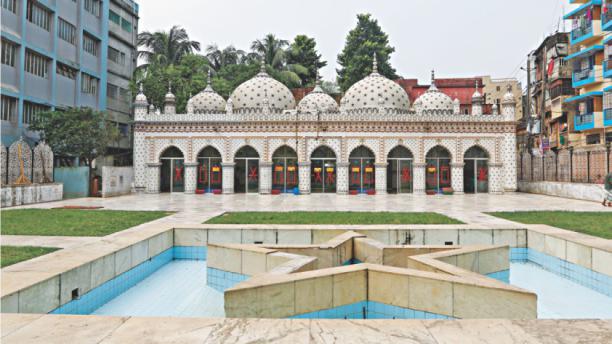
Located at Armanitola in old Dhaka, decorated with engraved floral and star patterns, Star mosque or Tara Masjid is one of the most famous tourist attractions in Bangladesh. It has ornate designs and it is decorated with motifs of blue stars. This beautiful building was built in the first half of the 19th century by Mirza Golam Pir. Unlike other Mughal architectures, there is no inscription found in the mosque mentioning its founding year.
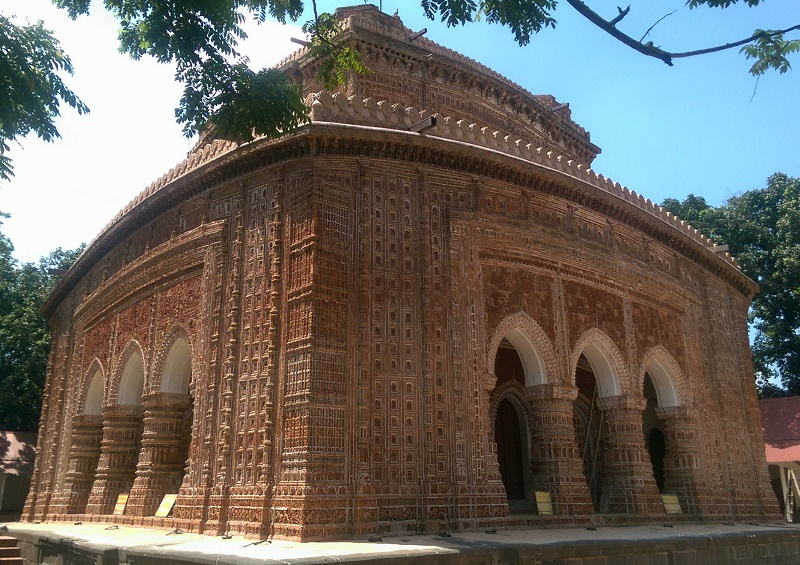
Kantaji Temple is a late-medieval Hindu temple at Kantanagar, Dinajpur. This temple is one of the best examples of the 18th century’s stunning religious edifices. It belongs to Hindu God Krishna and so it’s most popular among the devotees of Krishna in Bengal. Maharaja Pran Nath built this magnificent temple and devoted it to Krishna and his wife Rukmini. The construction work of this beautiful structure started in 1704CE and completed in 1722 CE. Its wall surfaces, both inside and outside are ornamented with figured and floral terracotta art. The stories from Mahabharata and Ramayana, the exploits of Krishna and a series of absolutely fascinating contemporary social scenes are depicted on the wall through the terracotta art.
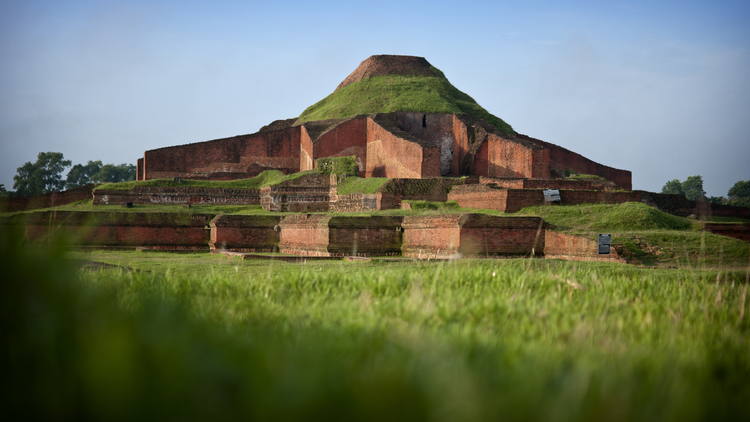
Mahasthangarh is the most ancient city of Bangladesh. The word Mahasthan means a place with holiness and Garh means fort. The massive remains of Mahasthangarh represent a majestic past of about two thousand and five hundred years of Pundranagar, the capital of ancient Pundra Vardhan. This place is located 13 km north of Bogra town. Once, this rich city was fortified by brick walls. This one of the highest areas of Bangladesh is about 36 meters above sea level. The fortified city is rectangular in plan and it’s 1,525 meters long from north-south and 1,370 meters broad from east-west and 5 meters high from the surroundings. From a script discovered in 1931, it is known that this city existed during the 3rd century BC. This area was in use until the 18th century AD.
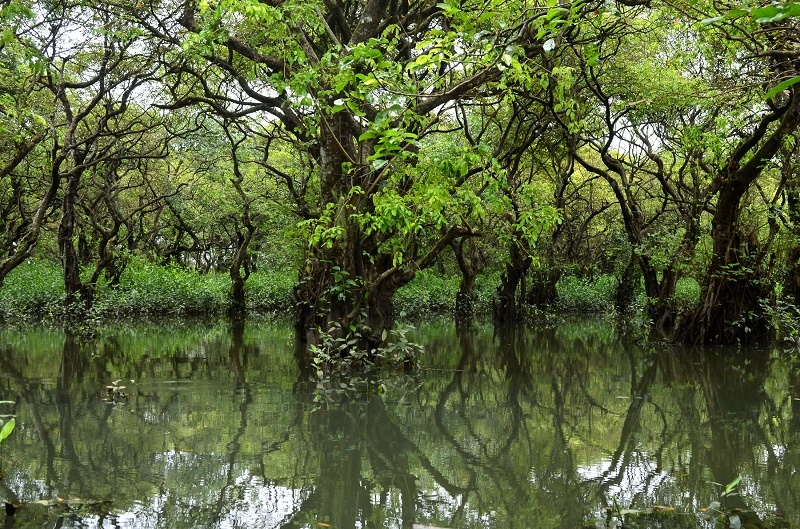
Located in Gowan River, Gowainghat, Sylhet Ratargul Swamp Forest is the only freshwater swamp forest in Bangladesh and one of the few in the world. It is called the Amazon of Bangladesh. The beauty of this evergreen forest blooms mainly in the rainy season. This forest is flooded by the water coming from the hills of India during monsoon.
Designed by famous architect Louis I Kahn, the National Parliament house of Bangladesh is one of the twentieth century’s most significant buildings. Located at Sher-e Bangla Nagar, this building is the largest legislative complex in the world. The construction work of Bangladesh National Parliament commenced in 1964 but halted due to the liberation war and it was finally completed in 1982. The total complex is divided into three parts: The Main Plaza, the South Plaza, and the Presidential Plaza.
Situated at the border between Bangladesh and Indian state Meghalaya, Jaflong is one of the most popular tourist destinations in Sylhet. Overshadowed by subtropical mountains and rain-forests, this place is about 60 km from Sylhet town. This scenic spot is situated on the river Piain. Its landscape beauty among gardens and hills enchants the tourists. The Mari River coming from the Himalayan Mountain range brings tons of stone boulders with its stream. This place is famous for its stone collection activities. It is the home of the Khasi tribe. Tourists come here mainly in winter to see the stone collecting process but during monsoon, Jaflong reveals its different type of beauty with numerous falls cascading from lush green mountains. The amazing beauty of white clouds and gushing waterfalls streaming from the green mountains enthralls locals as well as tourists.